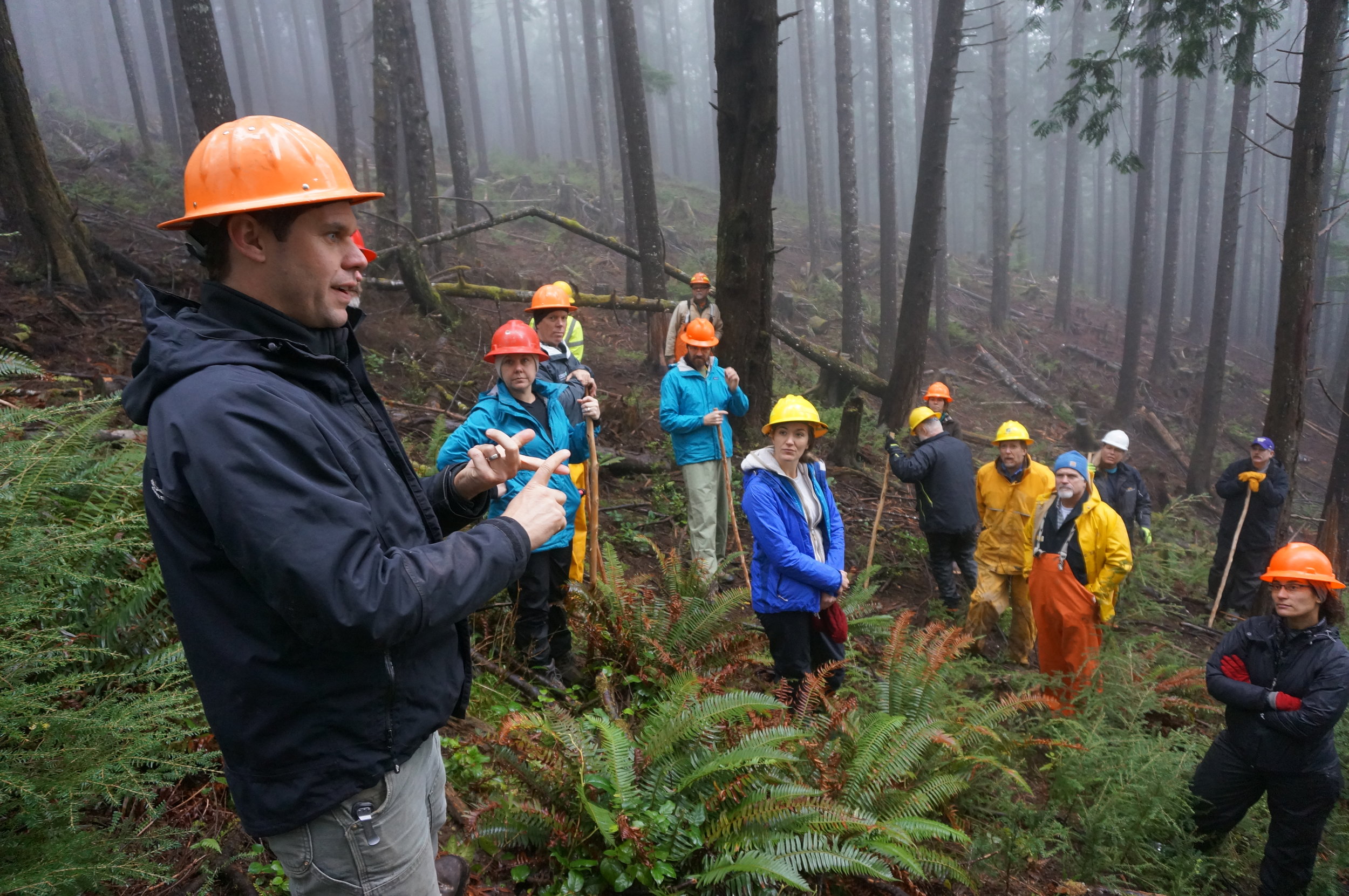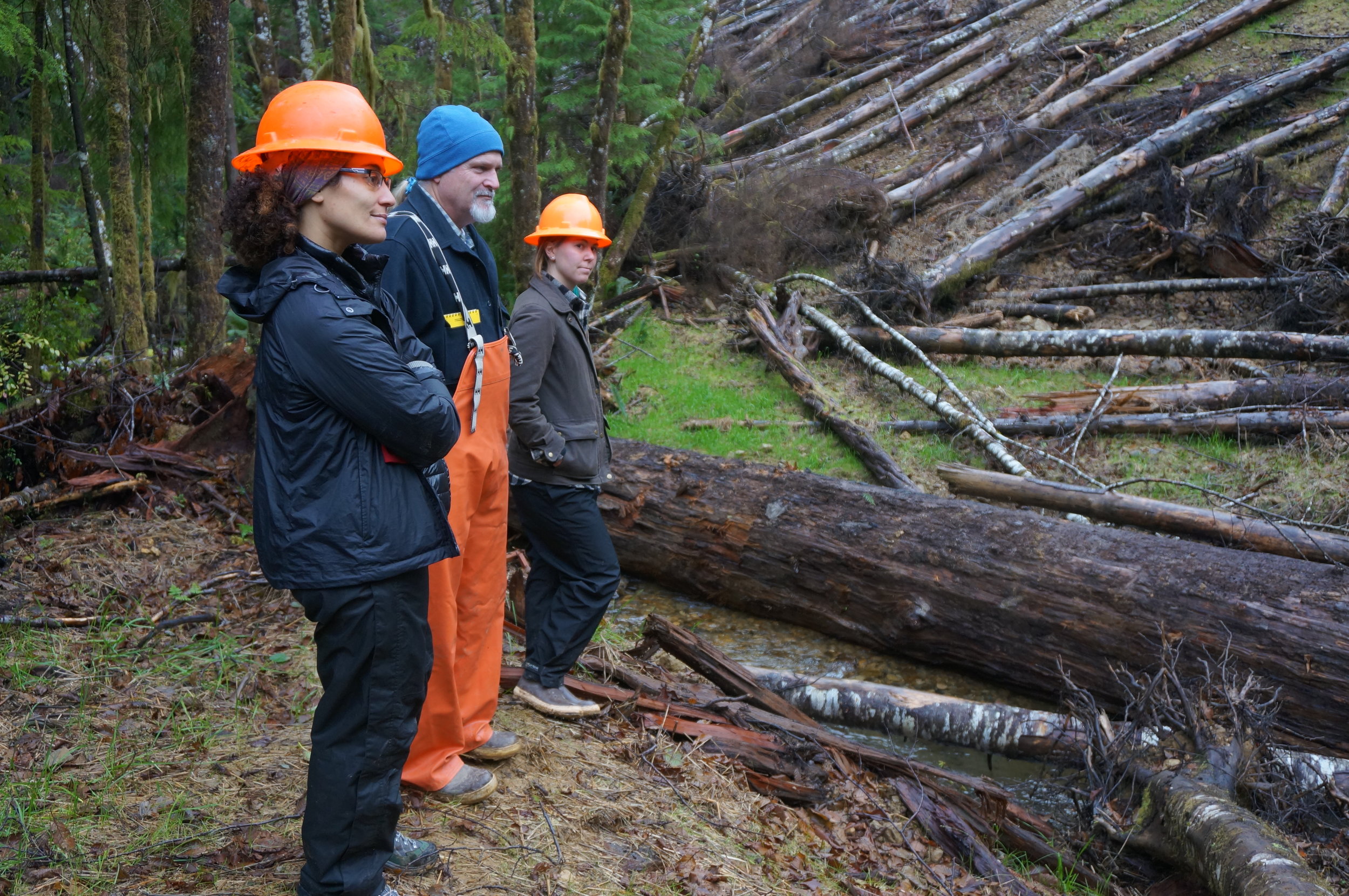Writing and photos by Ryan Haugo, forest ecologist
On a misty December morning, an esteemed group of forest ecologists from across the Pacific Northwest met with our staff along the shores of Willapa Bay to talk science and restoration. This group had driven through dark morning hours in order to spend the day tromping around the forest and building and strengthening science partnerships, while gaining a first-hand experience with The Conservancy’s “Ellsworth experiment.”
The Ellsworth Preserve is best known for protecting some of the largest remaining stands of coastal old-growth rainforest in southwest Washington. Towering forests of Western red cedar, Sitka spruce, western hemlock and Douglas fir support a number of endangered and threatened species as well as coastal cutthroat trout, chum and coho salmon. However, the preserve doesn’t just protect old-growth forest. In fact, the preserve is predominately young, dense forests that for many decades were heavily harvested for timber. In 2006, we launched the audacious goal of conserving and restoring the ecological integrity of these former industrial forest lands.
At the time, moving from the protection of small preserves to entire watersheds and diving headlong into active forest management was a huge step for The Conservancy. The best available science suggested that forest thinning (logging!) and repair or decommissioning of forest roads would be important tools to aid recovery of coastal watersheds and restore old-growth habitats. However, across the Pacific Northwest coast, there were few examples of full-bore ecological restoration at such a scale. Our Ellsworth experiment applied a rigorous design and an extensive monitoring network to test and evaluate the best approach. Before the first forest treatments began, we conducted detailed measurements of forest structure and vegetation, birds and amphibians and stream habitats to establish a baseline.
Often we describe science as “cutting edge.” This might make it seem that data, the fundamental building block of science, have a limited lifespan and easily spoil if left too long on the counter. Sometimes this is true. But when science is done well, using experiments designed for the long haul, data are more like fine wines that get better with age. Do our original 10-year-old measurements from Ellsworth still have value? Absolutely. Ecosystems change slowly, and our pre-treatment data are just now ready to pair with updated findings on the state of the preserve today.
This will allow us to start answering the fundamental questions of the Ellsworth experiment. But we need to identify creative collaborations and funding opportunities to ensure a return on our investments in healthy forests (consider donating to help continue this work). Through outreach and an open invitation to the science and conservation communities, we hope to foster an extended shelf life for our data. The insights yet to be revealed have the potential to inform future forest restoration within and beyond Ellsworth.
As we concluded the Ellsworth science tour in the early December twilight, our boots were heavy with mud but our spirits were buoyant and enthusiasm was high. The pre-treatment data provide a tremendous foundation. New technologies are emerging to aid in our efforts and exciting new partnerships are on the horizon. The second decade of science at Ellsworth is looking very promising.



































